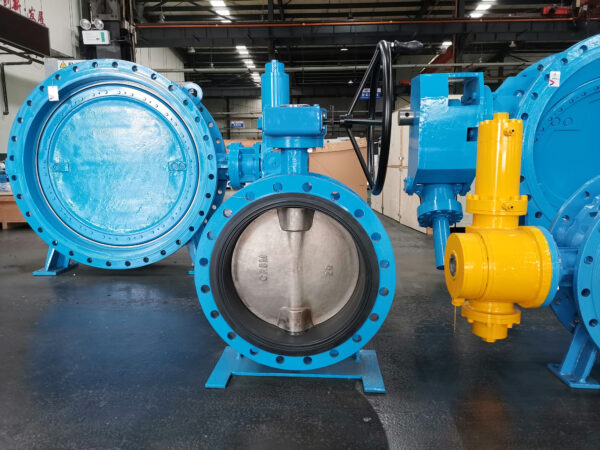Calculating the flow rate through a double-flanged butterfly valve involves using principles of fluid mechanics and valve characteristics.
Here’s a general approach to calculate the flow rate:
- Understand Valve Characteristics: Double-flanged butterfly valves have a characteristic flow coefficient (Cv) or flow capacity that represents the valve’s ability to pass fluid at a given pressure drop. This Cv value is typically provided by the valve manufacturer and is specific to the size and design of the valve.
- Determine Pressure Drop: Determine the pressure drop across the double-flanged butterfly valve. This can be obtained from the system design or calculated based on the difference in pressure between the inlet and outlet of the valve.
- Use the Cv Equation: Use the Cv equation to calculate the flow rate through the valve:𝑄=𝐶𝑣×Δ𝑃𝑆𝐺Q=Cv×SGΔPWhere:
- 𝑄Q = Flow rate through the valve (gallons per minute, liters per minute, etc.)
- 𝐶𝑣Cv = Flow coefficient of the valve (dimensionless)
- Δ𝑃ΔP = Pressure drop across the valve (psi, bar, etc.)
- 𝑆𝐺SG = Specific gravity of the fluid (dimensionless)
- Convert Units: Ensure that all units are consistent in the equation. If necessary, convert units to match the desired output units (e.g., gallons per minute, liters per minute).
- Calculate Flow Rate: Plug the values of Cv, double flanged butterfly valve pressure drop (Δ𝑃ΔP), and specific gravity (𝑆𝐺SG) into the equation and calculate the flow rate (Q) through the double-flanged butterfly valve.
- Consider Flow Regime: Verify that the flow rate calculated falls within the acceptable range for the flow regime (e.g., laminar, transitional, turbulent) based on the Reynolds number and system characteristics.
- Verify Results: Compare the calculated flow rate with the expected flow rate based on system requirements, design specifications, and operational considerations. Adjustments may be necessary based on actual operating conditions and valve performance.
- Account for Valve Opening: The flow rate through a double-flanged butterfly valve is also influenced by the valve opening angle. As the valve opens or closes, the effective flow area changes, affecting the flow rate. Consider the valve’s position when calculating flow rate, especially in modulating or throttling applications.
- Consult Valve Manufacturer: If specific flow performance data or curves are required, consult the valve manufacturer for detailed information on the valve’s flow characteristics, including Cv values and flow rate calculations.
By following these steps and considerations, you can calculate the flow rate through a double-flanged butterfly valve, helping to ensure proper sizing and performance in fluid handling applications.
